The specialty coffee market faces a persistent challenge: achieving consistent, precise extraction across varying conditions. Without proper tools, baristas struggle with unpredictable results, frustrating both professionals and consumers. Innovative coffee tool designs are emerging to solve this precision gap.
Modern coffee tool innovations addressing precision extraction include column extraction systems that optimize flow dynamics, ultrasonic technology accelerating extraction uniformly, AI-driven quality control tools, adaptive roasting and brewing equipment with sensor monitoring, and sustainable designs that maintain precision while reducing environmental impact.
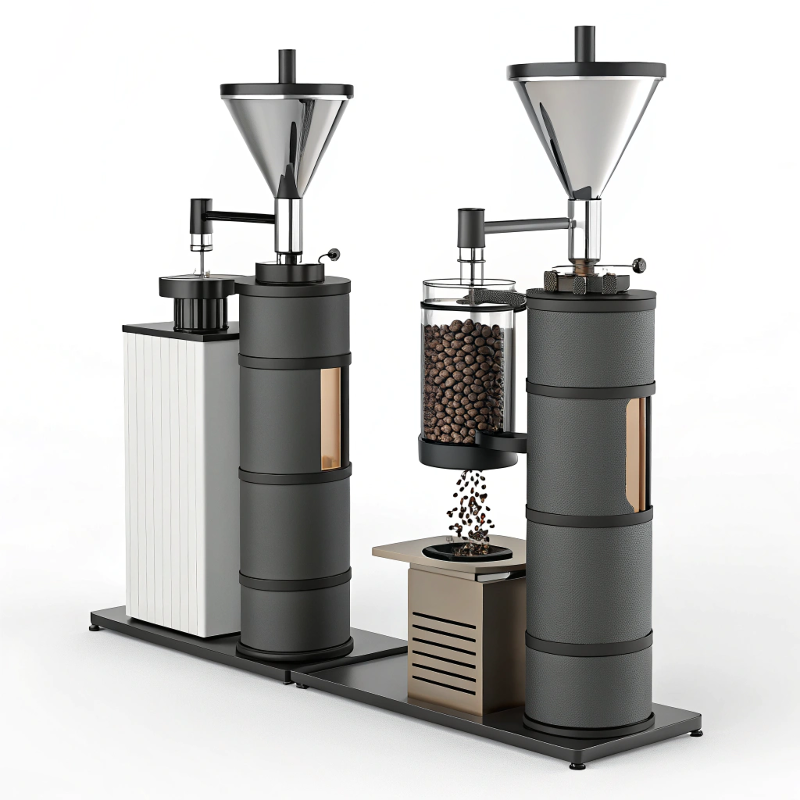
As a manufacturer focused on premium coffee accessories, I've seen firsthand how these innovations are reshaping the industry. Let's explore the most significant advancements that are meeting the growing demand for precision in specialty coffee preparation and how they're changing the way we approach extraction.
How are column extraction systems revolutionizing coffee precision?
Traditional extraction methods often suffer from inconsistent saturation and uneven flow. These inconsistencies lead to unpredictable flavors and wasted potential in premium beans. Column extraction systems are redefining what's possible in precision coffee production.
Column extraction systems utilize vertical extraction columns that optimize flow dynamics and saturation, reducing processing time to 2-4 hours while improving yield consistency to 20-24%. These systems enable targeted flavor profiling through precise pressure regulation, countercurrent flow, and modular scalability.
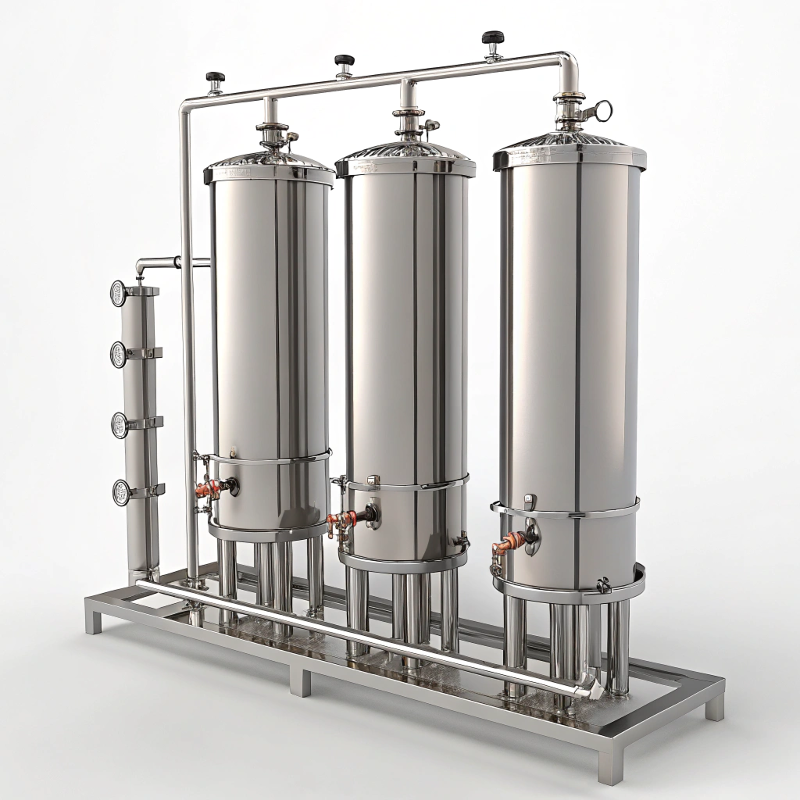
In our manufacturing facility, I've observed firsthand how column extraction technology is transforming precision coffee production. These systems represent a fundamental shift from horizontal to vertical extraction methodologies, creating more uniform pressure distribution throughout the coffee bed. The key advantage lies in how these columns manage flow dynamics – they create a more controlled environment where water and coffee interact.
The technical specifications are impressive: processing times reduced by up to 60% compared to traditional methods, with extraction yields consistently falling within the 20-24% range – the sweet spot for balanced flavors without excessive bitterness. This level of consistency was nearly impossible to achieve with previous technologies.
These systems incorporate:
| Feature | Benefit | Application |
|---|---|---|
| Precise pressure regulation | Prevents channeling and ensures even extraction | Critical for light-medium roasts |
| Countercurrent flow configurations | Maximizes saturation efficiency | Particularly valuable for dense, high-altitude beans |
| Modular scalability | Adapts to various production volumes | Serves both small roasters and large operations |
While the capital investment for column extraction systems remains substantial, the return on investment through consistency and efficiency makes them increasingly attractive for serious coffee businesses. The space efficiency of vertical designs is also worth noting – an important consideration for urban coffee operations where square footage comes at a premium.
Our engineering team has been experimenting with modifications to these systems to make them more accessible to mid-sized operations, focusing on simplified interfaces while maintaining precision components.
Can ultrasonic technology transform coffee extraction methods?
Coffee extraction has traditionally been limited by time constraints and physical boundaries. This limitation forces compromises between extraction quality and production efficiency. Ultrasonic technology is breaking through these barriers with remarkable results.
Ultrasonic extraction technology uses sound waves to accelerate extraction processes, significantly reducing processing time while improving extraction uniformity. This method minimizes waste and energy consumption while maintaining precise control over flavor development.
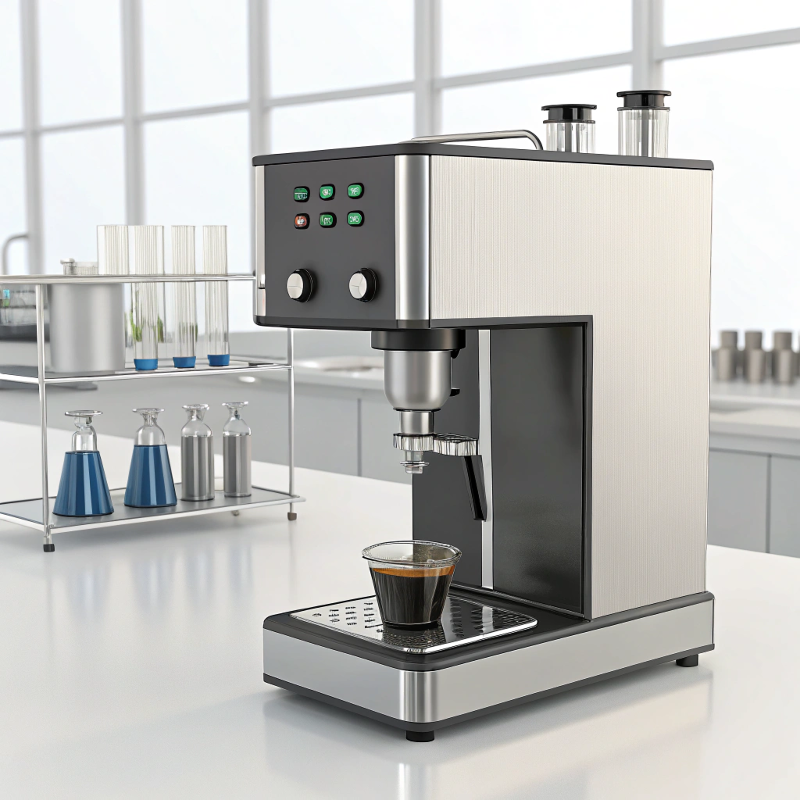
When I first encountered ultrasonic extraction technology at a manufacturing expo in Germany, I was skeptical about its application to specialty coffee. However, after implementing testing protocols in our R&D lab, the results were undeniable. Ultrasonic waves fundamentally alter the extraction dynamics by creating microscopic cavitation bubbles that enhance solubility and cellular breakdown at the molecular level.
The practical implications of this technology are substantial for precision-focused coffee businesses. By generating high-frequency sound waves (typically between 20-40 kHz), these systems can reduce extraction times by 30-50% while maintaining or even improving extraction uniformity. This time efficiency translates directly to operational benefits without sacrificing quality – a rare combination in coffee production.
From a sustainability perspective, ultrasonic methods show promising advantages:
| Sustainability Factor | Improvement | Impact |
|---|---|---|
| Water usage | Reduced by 15-20% | Conservation of precious resources |
| Energy consumption | More efficient extraction requires less heating | Lower carbon footprint |
| Coffee yield | Improved by 5-10% from same amount of grounds | Reduced waste across the supply chain |
The technology integrates particularly well with cold brew applications, where traditional methods require 12-24 hours. Ultrasonic-assisted cold brew can achieve comparable flavor profiles in 2-4 hours while extracting a wider range of flavor compounds that might otherwise remain locked in the bean structure.
In our product development pipeline, we're exploring ways to incorporate ultrasonic elements into commercial-grade brewing equipment that remains accessible to specialty coffee businesses of various sizes. The challenge lies in balancing the precision benefits with practical implementation that doesn't overwhelm baristas with unnecessary complexity.
How is AI reshaping quality control in specialty coffee production?
Quality inconsistency plagues coffee production, with human sensory limitations and subjective assessments leading to variable results. This variability creates unpredictable customer experiences and impacts brand reputation. AI-driven quality control is emerging as the solution to these persistent challenges.
AI-driven quality control utilizes machine learning and computer vision to analyze green beans and extraction parameters in real-time, offering objective grading beyond human sensory limits, data-driven optimization of roast profiles, and predictive quality assessment throughout the supply chain.
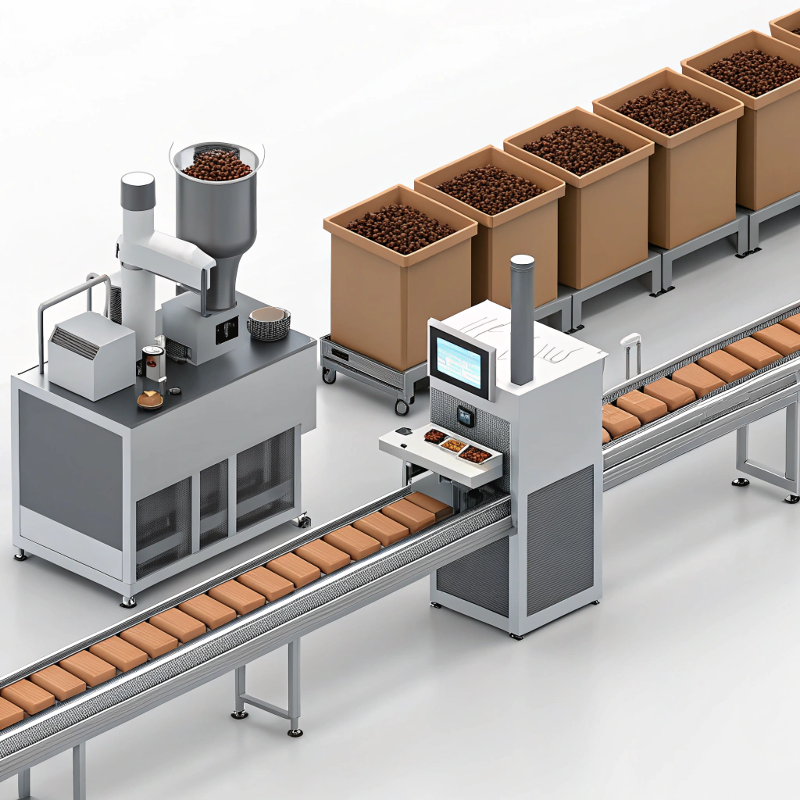
The integration of artificial intelligence into coffee quality control represents one of the most significant paradigm shifts I've witnessed in my years in the industry. Traditional quality assessment relies heavily on human sensory evaluation – an approach that, while valuable, inherently introduces variability and subjectivity. AI systems complement human expertise by providing consistent, objective measurements that extend beyond what our senses can detect.
Modern AI quality control systems in the coffee industry typically incorporate:
| Component | Function | Precision Advantage |
|---|---|---|
| Computer vision | Identifies bean defects, size inconsistencies, and color variations | Can detect issues at scales of 0.1mm, far beyond human visual acuity |
| Spectroscopic analysis | Measures chemical composition and predicts flavor compounds | Identifies subtleties in bean composition that influence extraction |
| Machine learning algorithms | Correlates processing parameters with quality outcomes | Continuously improves prediction accuracy through feedback loops |
The practical application of these technologies creates a more robust quality assurance framework. For example, when connected to roasting equipment, these systems can make micro-adjustments to roast profiles based on specific bean characteristics, ensuring that each batch achieves its optimal flavor potential regardless of minor variations in the incoming green coffee.
For our manufacturing clients, the implementation of AI quality control has transformed their approach to product consistency. Rather than relying solely on post-production cupping sessions (which remain important), they can monitor quality parameters throughout the production process, making preemptive adjustments before issues manifest in the cup.
The data-driven nature of these systems also enhances traceability and transparency across the supply chain. Coffee businesses can now provide customers with detailed information about their products, from farm-level growing conditions to precise extraction parameters that maximize flavor potential. This data backbone supports both quality control and marketing narratives that increasingly resonate with specialty coffee consumers who demand both excellence and transparency.
What advancements in adaptive brewing technology are enhancing consistency?
Coffee brewing remains frustratingly variable, with environmental factors and equipment limitations causing inconsistent results. This inconsistency frustrates even skilled baristas and undermines customer satisfaction. Adaptive brewing technology is emerging as the critical solution for predictable excellence.
Adaptive brewing technology incorporates sensor-monitored temperature and flow control, mobile app calibration for recipe replication, and adjustable parameters for batch-specific tuning. Smart roasting machines customize profiles for specific bean lots using AI, ensuring unmatched consistency in flavor development.
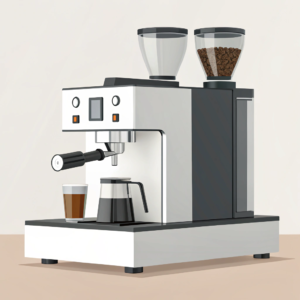
Through my work with coffee equipment distributors across Europe and the Middle East, I've observed a clear evolution in how adaptive brewing technology is reshaping expectations for consistency. The latest generation of precision brewing equipment has moved beyond simple temperature stability to create truly adaptive systems that respond to environmental variables and bean-specific characteristics.
At the heart of this technology are integrated sensor networks that continuously monitor critical extraction parameters:
| Parameter | Sensing Technology | Adaptive Response |
|---|---|---|
| Water temperature | High-precision thermistors (±0.1°C accuracy) | Real-time heating element modulation |
| Flow rate | Electromagnetic flow meters | Dynamic pump pressure adjustment |
| TDS (Total Dissolved Solids) | Optical refractometry | Feedback to guide extraction time |
| Pressure profile | Digital manometers | Customized pressure curves for different coffee origins |
These systems create closed feedback loops that make micro-adjustments throughout the brewing process. For example, if ambient humidity changes (which affects ground coffee behavior), the system will detect subtle resistance changes in water flow and adjust accordingly to maintain the target extraction profile.
The mobile connectivity aspect of these technologies creates powerful ecosystem effects. Baristas can now share precisely calibrated recipes across locations, ensuring that a coffee tastes identical whether served in Dubai, London, or Sydney. This network effect extends to roasters as well, who can provide detailed brewing parameters optimized for their specific coffees, creating stronger partnerships throughout the supply chain.
In our product development, we've focused on creating components that support this adaptive ecosystem while maintaining mechanical reliability. Our precision filter baskets, for instance, are now manufactured with tolerances of ±0.02mm – a level of precision that complements the capabilities of these adaptive brewing systems. The integration of physical components with digital intelligence represents the future of consistency in specialty coffee.
The data collected through these systems also provides unprecedented insights into extraction efficiency and customer preferences, allowing businesses to optimize their offerings based on objective performance metrics rather than subjective impressions.
Are sustainable innovations compatible with precision coffee tools?
Coffee businesses face mounting pressure to reduce environmental impact while maintaining quality standards. This conflicting demand often leads to compromises in either sustainability or precision. Innovative sustainable coffee tools are finally resolving this seemingly impossible balance.
Sustainable coffee tool innovations like repurposed solar roasters and vacuum-press systems minimize environmental impact while maintaining extraction precision. These technologies prioritize resource efficiency without compromising quality standards, addressing specialty coffee's need for eco-conscious scalability.
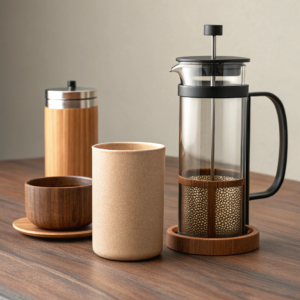
The compatibility of sustainability and precision has been a core focus of our research over the past three years. Initially, there was significant skepticism in the industry that environmentally-focused designs could deliver the exacting standards demanded by specialty coffee professionals. Our experience has demonstrated that not only are these goals compatible, but they can actually reinforce each other when approached thoughtfully.
Modern sustainable coffee tool innovations incorporate several key principles:
| Sustainability Approach | Precision Element | Real-World Application |
|---|---|---|
| Materials selection | Food-safe, durable alternatives to plastics | Our stainless steel distribution tools last 5x longer than plastic variants |
| Energy efficiency | Targeted heat application | Induction-based heating systems that reduce energy use by 30-40% |
| Water conservation | Recirculation systems | Closed-loop brewing systems that reduce water waste while maintaining extraction control |
| Waste reduction | By-product utilization | Spent coffee grounds repurposing integrated into production facilities |
One particularly promising development is vacuum-press technology that achieves extraction precision comparable to traditional methods while using approximately 15% less water and 20% less energy. These systems maintain precise control over brewing variables while significantly reducing resource consumption – a win-win for quality-focused businesses with sustainability commitments.
Solar roasting technology has also advanced considerably, moving beyond novelty status to viable production equipment. Modern solar roasters incorporate precision thermal mass elements that buffer temperature fluctuations, creating remarkably consistent roast profiles despite the variable nature of solar energy. The latest designs can achieve temperature stability of ±2°C throughout the roasting cycle – approaching the performance of conventional gas roasters.
From a manufacturing perspective, we've redesigned our production processes to reduce waste while maintaining or improving precision specifications. Our shower screen production, for example, now utilizes a stamping process that reduces metal waste by nearly 40% compared to traditional methods, while actually improving the consistency of water dispersion patterns.
The economics of sustainable precision tools have also evolved favorably. While early eco-friendly designs often commanded significant price premiums, manufacturing efficiencies and increasing scale have narrowed this gap. Many sustainable innovations now achieve price parity with conventional alternatives within 1-2 years of market introduction, making them increasingly attractive to businesses with both quality and environmental objectives.
Conclusion
The specialty coffee industry's pursuit of precision extraction is driving remarkable innovations across column systems, ultrasonic technology, AI quality control, adaptive brewing, and sustainable design. These advances collectively transform coffee production, ensuring consistent excellence while addressing efficiency and environmental concerns.




